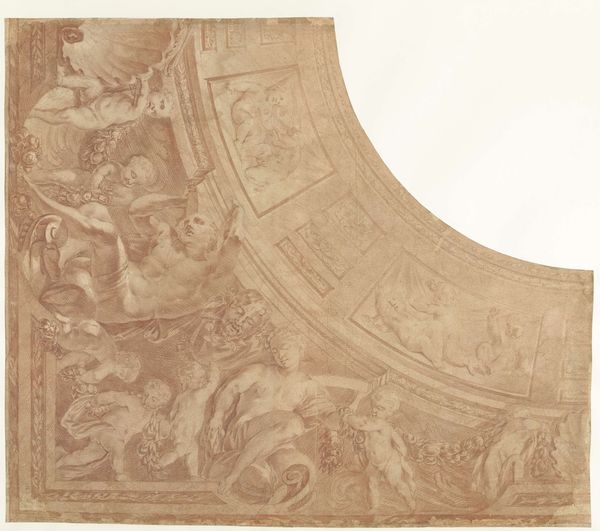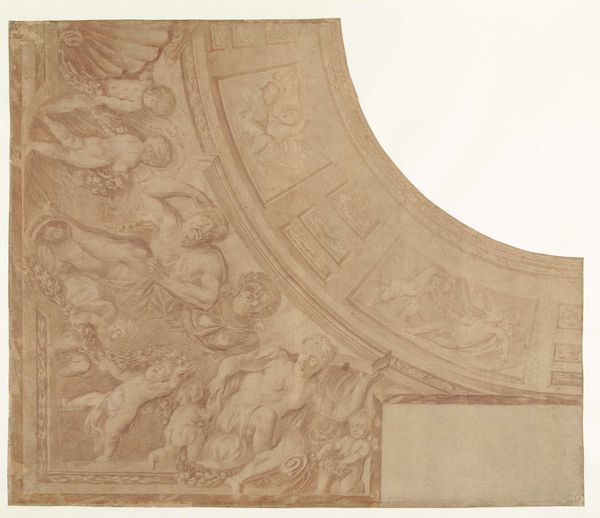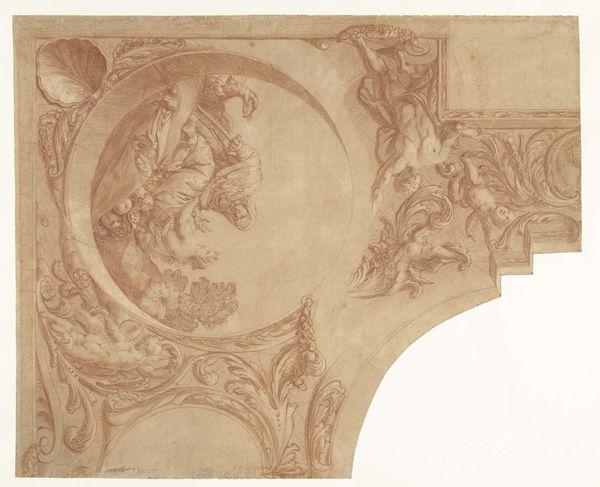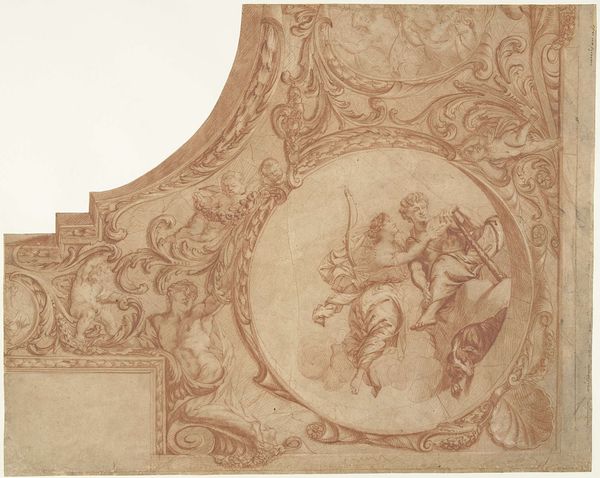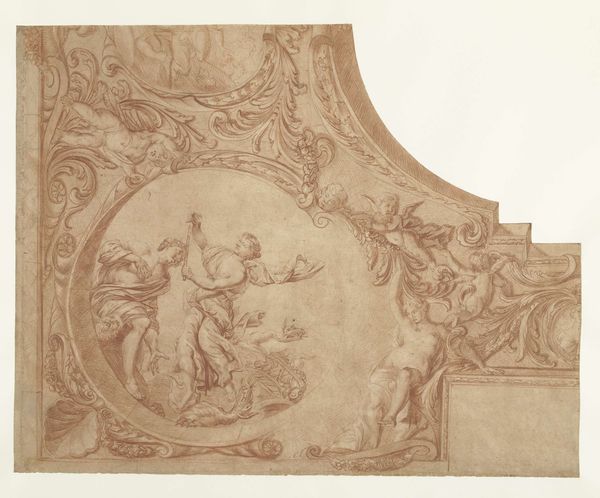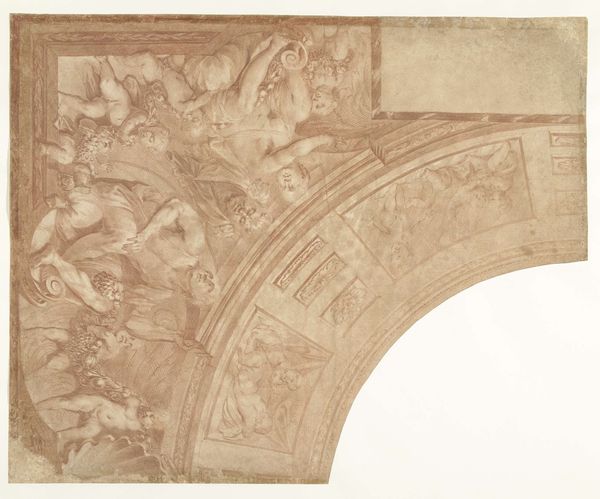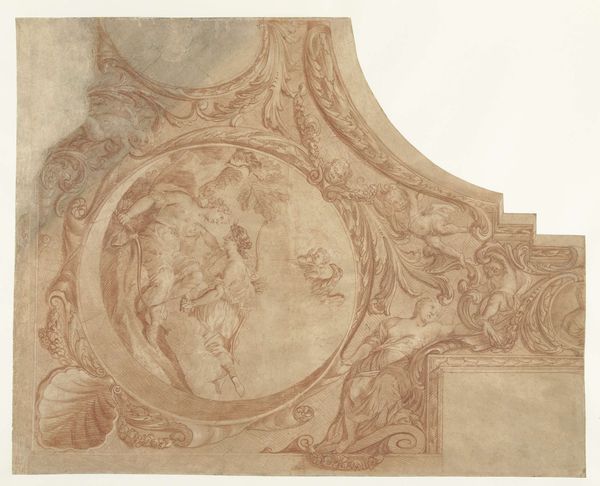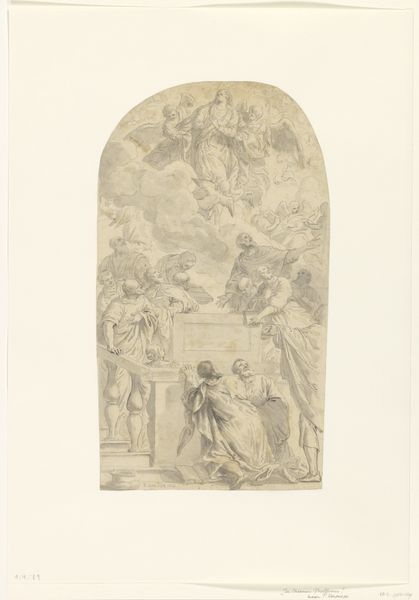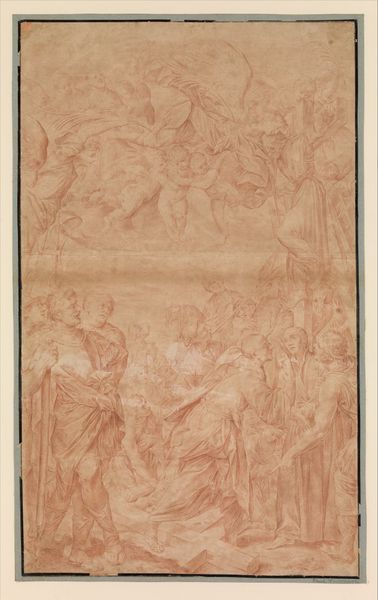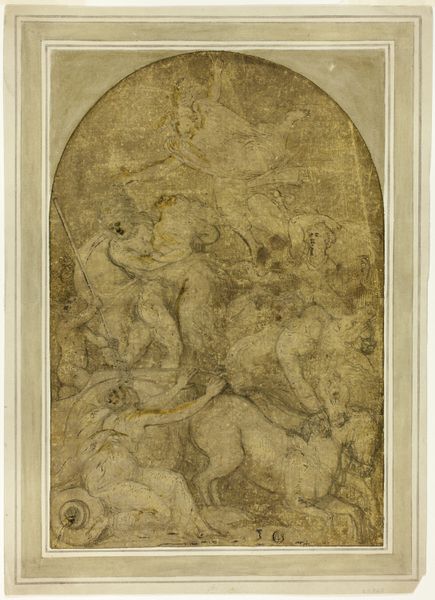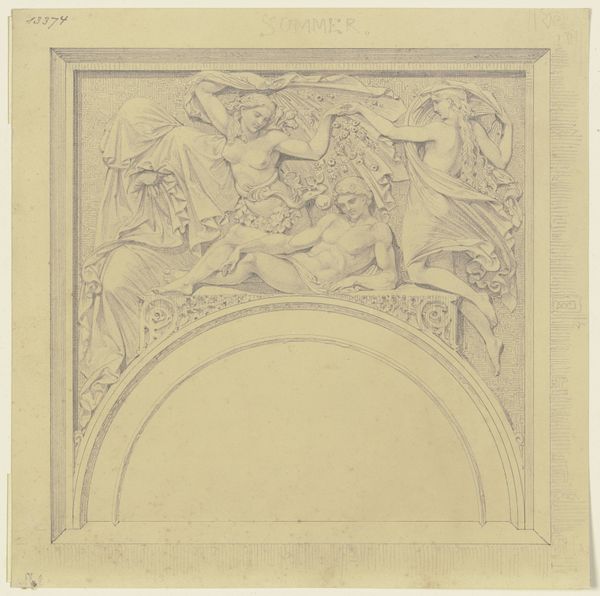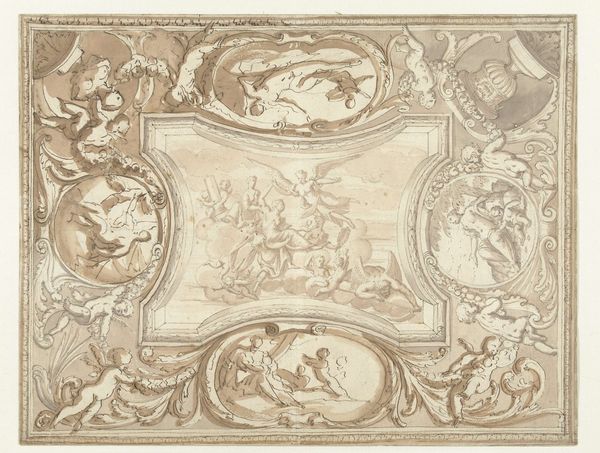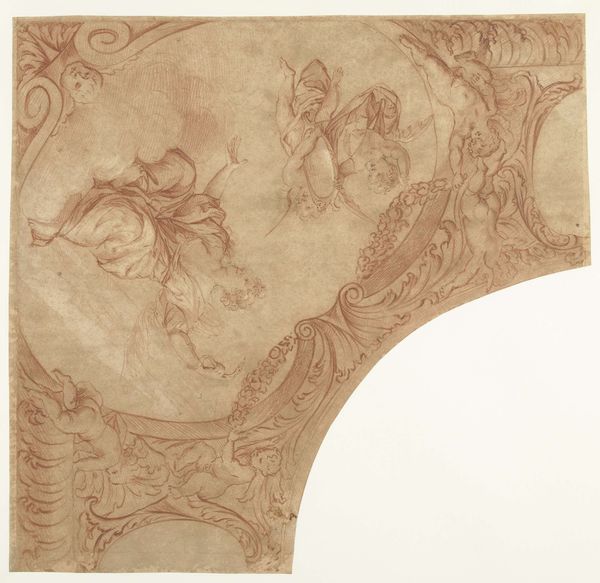
Ontwerp voor een hoekstuk van een plafond met figuren, putti en buste van een man 1680 - 1757
0:00
0:00
mattheusterwesten
Rijksmuseum
drawing, charcoal
#
drawing
#
baroque
#
etching
#
charcoal drawing
#
figuration
#
charcoal
#
history-painting
Dimensions: height 623 mm, width 518 mm
Copyright: Rijks Museum: Open Domain
Curator: Before us is a preparatory drawing by Mattheus Terwesten, active between 1680 and 1757. It’s entitled "Design for a Corner Piece of a Ceiling with Figures, Putti and Bust of a Man." Created using charcoal, this design hints at the grandeur of Baroque ceiling paintings. Editor: The term "grandeur" feels apt—there’s something weighty about it, yet with an ethereal quality. The figures seem to float even as they suggest this massive architectural element. It speaks to the power and control that wealthy families sought to reflect in domestic spaces, wouldn't you agree? Curator: Indeed. Terwesten’s skillful use of line and shading establishes form and volume within a shallow pictorial space, very much evoking that sense of architectural structure. The artist teases out depth and ornament through carefully constructed compositions. The organization suggests not just static figures, but how each flows and fits in a cohesive design. Editor: Thinking of "cohesive design" and wealth—aren't these cherubic figures and heroic nudes upholding power? Who are they meant to impress, and at what cost? It's easy to appreciate technique, but what about this promotion of unchecked power in private residences? Curator: Certainly, those social and political undertones exist within this visual vocabulary, although this work speaks more broadly of classical and humanist themes. Terwesten used the human form to display knowledge of anatomy and his grasp of classical aesthetics, employing figuration as a framework for ornament and structure. Editor: I'd suggest it can't so easily be separated from these issues. Think about the sheer amount of labor implied—from the physical creation of the work to the maintenance of the structures it would have adorned—while everyday people at the time often had very limited means. Looking through a social lens allows us to question that narrative and challenge those celebrations of power. Curator: Undoubtedly, but it offers the viewer, even today, visual depth through complex organization and carefully choreographed ornamentation. Editor: And viewing this "complexity" through a lens that accounts for social structures allows a far more multifaceted reading of the artwork’s history, while making contemporary audiences ask vital questions about that past and the power of display.
Comments
No comments
Be the first to comment and join the conversation on the ultimate creative platform.
